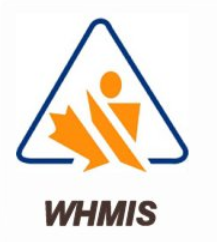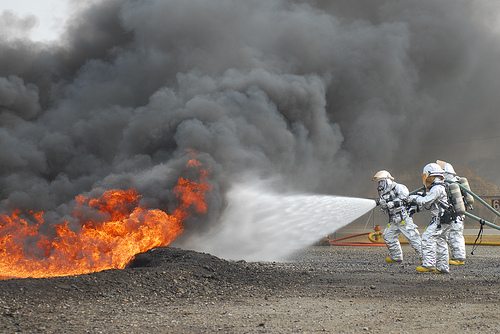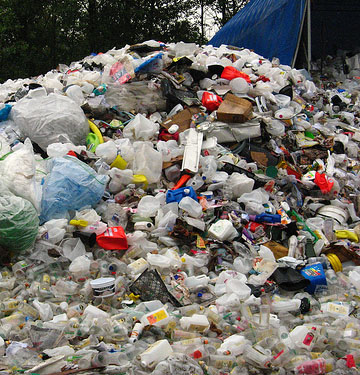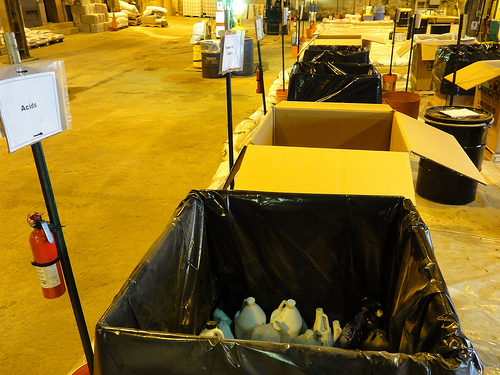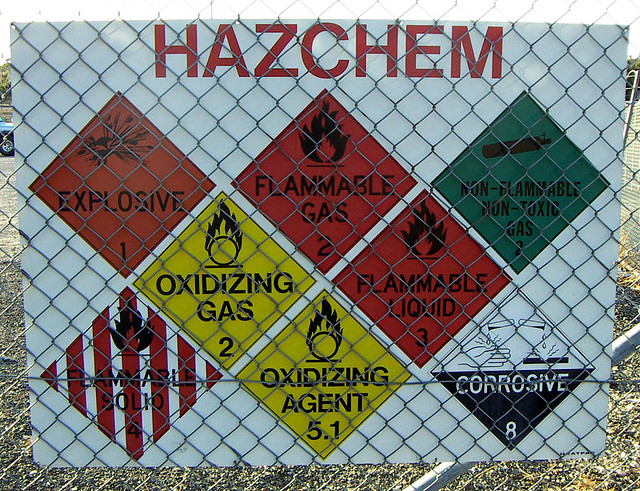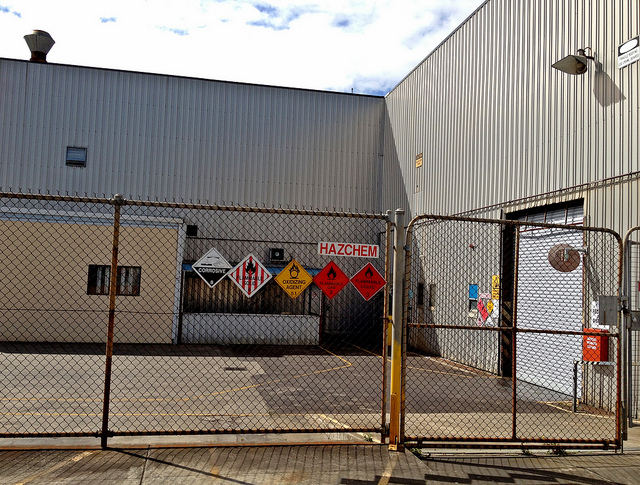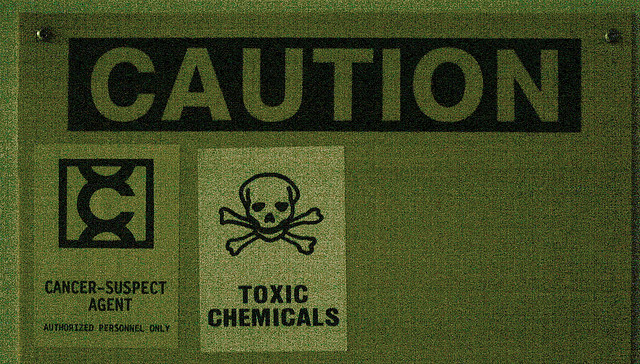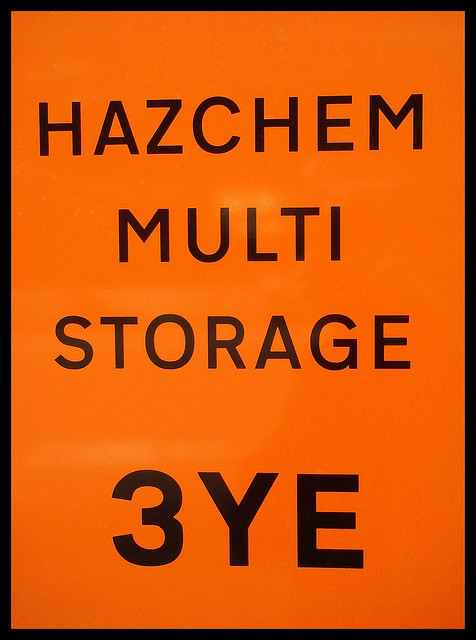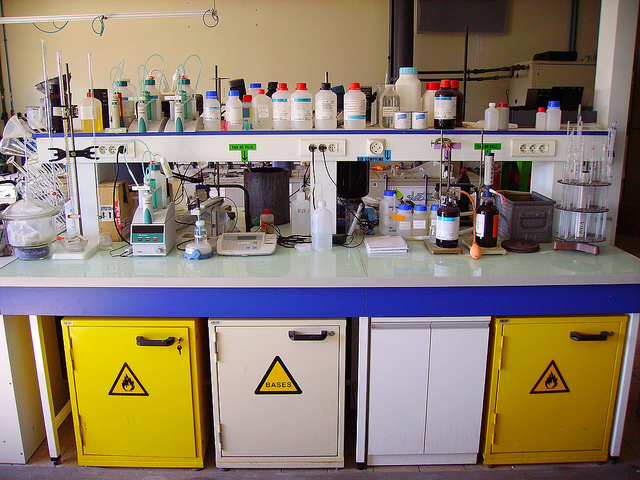By Kristen Brewer & Fergus McDonnell, Fasken Martineau DuMoulin LLP
Canada’s workplace hazardous chemicals communication system is changing in 2015. The existing scheme, involving the Workplace Hazardous Materials Information System which has been in place since 1988 (“WHMIS 1988”), is being modified to conform to the Globally Harmonized System for the Classification and Labelling of Chemicals (GHS).
Audit, Compliance and Risk Blog
Tags: Corporate Governance, Business & Legal, Health & Safety, Environmental risks, Environmental, Hazcom, Canadian
Have You Completed Your Hazardous Materials Management Plan?
Posted by Jon Elliott on Wed, Feb 25, 2015
A wide variety of federal, state and even local laws apply environmental, health and safety (EH&S) protection requirements to chemicals. EH&S compliance personnel are accustomed to complying with chemical management requirements imposed by the Environmental Protection Agency (EPA), Occupational Safety and Health Administration (OSHA), and their state equivalents.
Tags: Corporate Governance, Health & Safety, OSHA, California Legislation, Environmental risks, Environmental, EPA, Greenhouse Gas, ghg, Hazcom
Expanding Recycling Responsibilities for Specific Solid Wastes
Posted by Jon Elliott on Mon, Feb 23, 2015
Adopted half a century ago, the Solid Waste Disposal Act (SWDA) of 1965 is one of the first federal statutes in the modern era of environmental protection. SWDA focused originally on worries that a “landfill crisis” combined predictions that landfills would soon be too full to provide disposal capacity, and longstanding concerns that poorly designed municipal and industrial landfills might not protect public health. The Environmental Protection Agency (EPA) has applied SWDA authority to adopt landfill standards, which are administered by state and local governments nationwide.
Tags: Corporate Governance, Health & Safety, Environmental risks, Environmental, EPA, Hazcom
The Resource Conservation and Recovery Act (RCRA) and its state counterparts provide requirements to govern hazardous wastes during every step of their management, from “cradle to grave.” Although these rules are intended to improve management and provide incentives for recycling and other beneficial uses of hazardous wastes, many organizations find many of the rules unnecessarily onerous – and therefore potentially counterproductive if they actually discourage beneficial activities. In addition, over time changes in technologies, commercial activities and regulatory priorities reveal gaps in existing rules. In January, the Environmental Protection Agency (EPA) revised its “Definition of Solid Waste” rules governing a number of potentially hazardous wastes that it instead considers to be “hazardous secondary materials”, and the range of recycling and recovery activities eligible for special regulatory considerations. The revisions become effective on July 13, 2015.
Tags: Environmental risks, Environmental, EPA, Hazcom, RCRA
Congress Updates Chemical Facility Anti-Terrorism Standards
Posted by Jon Elliott on Mon, Feb 02, 2015
In 2007, Congress added a provision to the Department of Homeland Security (DHS) budget, directing DHS to create a program to identify chemicals that might be tempting targets for terrorists, and to require facility that handle sufficiently large quantities of these chemicals of interest to establish security programs subject to DHS oversight (“Section 550”). DHS responded to Section 550 by issuing Chemical Facility Anti-terrorism Standards (CFATS) rules, requiring compliance to begin in 2008.
Tags: Corporate Governance, Business & Legal, Employer Best Practices, Health & Safety, Environmental risks, Environmental, Hazcom, Workplace violence
After a facility determines it has generated hazardous waste, it must determine how to manage that waste in compliance with the federal Resource Conservation and Recovery Act of 1976 (RCRA), regulations issued by the US Environmental Protection Agency (EPA), and their state equivalents. (I recently wrote about hazardous waste determination, here and here).
Tags: Corporate Governance, Health & Safety, Environmental, EHS, EPA, Hazcom, RCRA
EPCRA Tier II: Key State Differences for Chemical Inventory Reporting
Posted by Melanie Powers on Wed, Jan 21, 2015
Tags: Corporate Governance, Business & Legal, Health & Safety, EHS, Hazcom, STC, Webinar
Hazardous Chemicals: Our Communities Have the Right to Know
Posted by STP Editorial Team on Wed, Jan 14, 2015
Our communities have the right to know when they are at risk of exposure to dangerous substances from accidental releases such as, but not limited to, chlorine, ammonia, hydrochloric acid, and sulfur dioxide. The US Environmental Protection Agency (EPA) agrees. In 1986 EPA created the Emergency Planning and Community Right-to-Know Act (EPCRA) to help communities plan for just such emergencies. EPCRA requires that federal, state, and local governments, Indian tribes, and industries be prepared for hazardous chemical emergencies. It also requires facilities to follow all recordkeeping requirements and report the storage, use, and release of hazardous chemicals to federal, state, and local governments.
Tags: Corporate Governance, Business & Legal, Employer Best Practices, Health & Safety, Employee Rights, Environmental risks, Environmental, EHS, EPA, Hazcom
Chemical Safety Board Recommends Better Process Safety Management
Posted by Jon Elliott on Mon, Dec 15, 2014
Within the U.S., most chemical safety requirements are imposed by the Occupational Safety and Health Administration OSHA) and the Environmental Protection Agency (EPA). For example, OSHA (or delegated state agencies) administers a Process Safety Management (PSM) Standard, while EPA (or delegated state agencies) administers the Accidental Release Prevention (ARP) regulation. In addition to these sets of regulators, however, Congress has created a national agency to conduct independent investigations of major chemical accidents, and to issue accident-specific findings and specific or general recommendations for improved chemical handling and regulation. This agency’s formal name is the Chemical Safety and Hazard Investigation Board—which usually refers to itself as the Chemical Safety Board or CSB.
Tags: Corporate Governance, Business & Legal, Health & Safety, OSHA, Environmental risks, Environmental, EPA, Hazcom
Waste Identification Part II: Is My “Solid” “Waste” A “Hazardous Waste”?
Posted by Jon Elliott on Mon, Dec 08, 2014
Federal and state laws govern “hazardous wastes”—the federal law is commonly called RCRA, after the Resource Conservation and Recovery Act of 1976. However, RCRA itself was enacted as an expansion of the prior Solid Waste Disposal Act of 1965, and requirements for both solid and hazardous wastes have been revised many times in recent decades. The US Environmental Protection Agency (EPA) administers these requirements nationally, delegating many provisions to individual states that qualify for authorization to assume regulatory roles.
Tags: Business & Legal, Health & Safety, Environmental risks, Environmental, EHS, Hazcom

